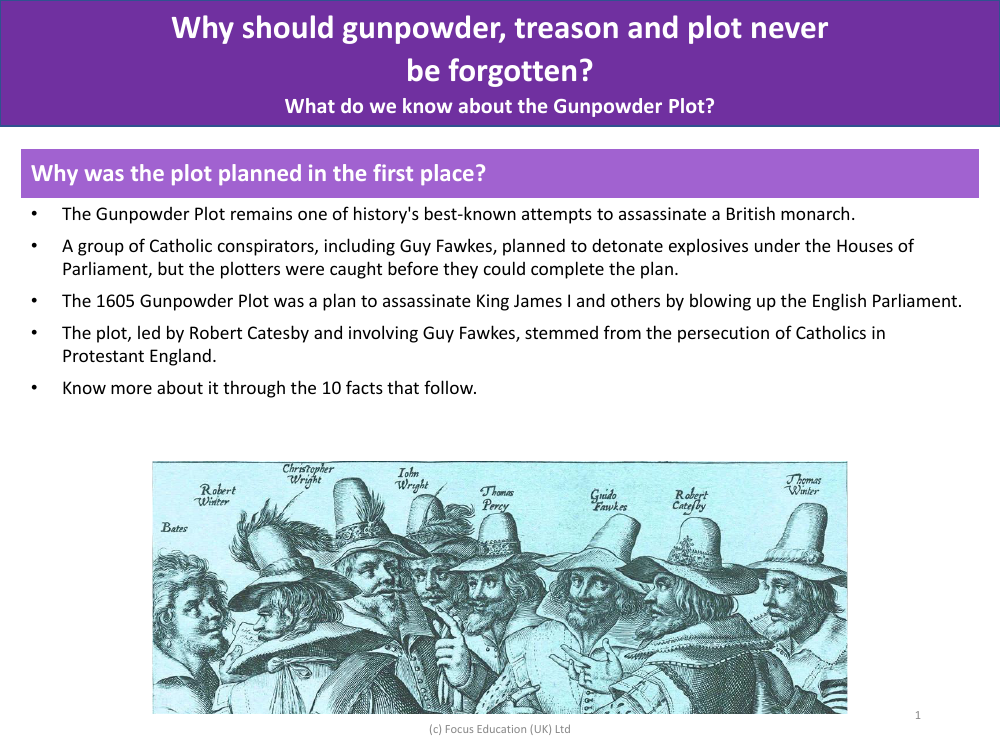Why was the gunpowder plot planned? - Info pack

History Resource Description
The Gunpowder Plot, an infamous scheme in British history, was hatched as a drastic measure against the reigning monarch, King James I, in 1605. Its primary aim was to annihilate the King and other nobles by setting off an explosion beneath the Houses of Parliament. The motivation behind this violent plot was deeply rooted in religious conflict, with the main perpetrators being a faction of Catholic extremists. These conspirators, including the notorious Guy Fawkes, sought retribution for the ongoing persecution they faced in a dominantly Protestant England. The plot's discovery before its execution left an indelible mark on history and is a stark reminder of the lengths to which individuals have gone in the pursuit of their religious and political ideologies.
The significance of the Gunpowder Plot extends beyond its failure; it is a symbol of the enduring struggle between religious authority and the state, and the extreme measures some are willing to take in the name of faith. The attempt on the lives of King James I and the Parliament members was a bold and desperate act of defiance by the Catholic conspirators, led by Robert Catesby and featuring Guy Fawkes, against the Protestant establishment. The plot's legacy is such that it is still commemorated every year on November 5th, serving as a historical lesson on the dangers of religious intolerance and the importance of remembering the past to prevent the recurrence of such acts of treason and violence.









